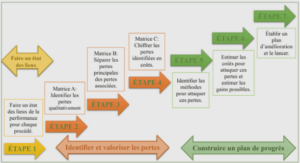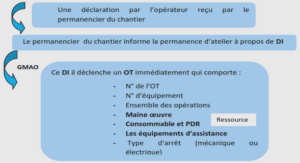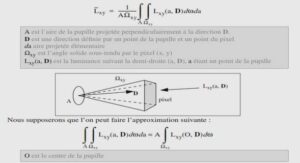Local boundary controllability to trajectories for the 1d compressible Navier Stokes equations
Introduction
Let us consider the 1d compressible Navier-Stokes equations stated in a bounded domain (0, L) and in finite time horizon T > 0: ( ∂tρs + ∂x(ρsus) = 0 in (0, T) × (0, L), ρs(∂tus + us∂xus) − ν∂xxus + ∂xp(ρs) = 0 in (0, T) × (0, L). (1.1 .1) Here, ρs is the density of the fluid, and us represents its velocity. The pressure term p = p(ρs) is assumed to depend on the density ρs, according to a law which can take different forms. In this article, we will only require p ∈ C 2 (R ∗ +; R), which encompasses the cases of pressure of the form p(ρs) = Aργ s , with A > 0 and γ ≥ 1, (1.1 .2) corresponding to the isentropic law for perfect gases. The constant ν > 0 stands for the viscosity of the fluid. To be well posed, system (1.1 .1) should be completed with initial data at t = 0 and boundary conditions, but we will not make them precise yet. Instead, we assume that we have a solution (ρ, u) of (1.1 .1) in (0, T) × (0, L), which enjoys the following regularity: (ρ, u) ∈ C 2 ([0, T] × [0, L]) × C 2 ([0, T] × [0, L]), with inf [0,T]×[0,L] ρ(t, x) > 0. (1.1 .3) The question of local exact boundary controllability we aim at addressing is the following: if we consider a solution (ρs, us) of (1.1 .1) starting at t = 0 from an initial data close to 29 Local boundary controllability to trajectories for the 1d compressible Navier Stokes equations (ρ(0, ·), u(0, ·)), can we find boundary controls such that the corresponding solution of (1.1 .1) reaches exactly (ρ(T, ·), u(T, ·)) at time T? In order to state our result precisely, we introduce an extension of (ρ, u) on [0, T] × R, still denoted in the same way for sake of simplicity, enjoying the same conditions as in (1.1 .3):
Main steps of the proof of Theorem
The aim of this section is to give the structure of the proof of Theorem 1.1 .1 and its main steps. 1.2 .1 Reformulation of the problem We start by introducing the variation (ρ, u) of (ρs, us) around the trajectory (ρ, u), defined by (ρ, u) = (ρs, us) − (ρ, u) in (0, T) × (0, L). (1.2 .1) The new unknowns (ρ, u) then satisfy ∂tρ + (u + u)∂xρ + ρ∂xu + ρ ν p 0 (ρ) + ∂xu ρ = f(ρ, u) in (0, T) × (0, L), ρ(∂tu + u∂xu) − ν∂xxu = g(ρ, u) in (0, T) × (0, L), (1.2 .2) where f(ρ, u) = −ρ∂xu + ρ ν p 0 (ρ)ρ − ∂xρu, g(ρ, u) = −ρ
Carleman weights
Our fixed point argument will be done in suitable weighted spaces coming from the use of Carleman estimates, namely the ones in [3, Theorem 2.5]. In this section, we construct once for all the Carleman weights that will be used along the article. Let us introduce a cut-off function η ∈ C∞(R; [0, 1]) such that ∀x ∈ R, η(x) = 1 for x ∈ [0, L], 0 for x ∈ R \ a 2 , L + b 2 . (1.2 .13) We then construct a weight function ψ as follows:
Controllability of the 1d compressible Navier-Stokes equations Lemma 1.2 .1. Let η as in (1.2 .13). There exists ψ ∈ C 2 ([0, T] × R) such that: ∀(t, x) ∈ [0, T] × R, ∂tψ + ηu∂xψ = 0, (1.2 .14) ∀(t, x) ∈ [0, T] × R, ψ(t, x) ∈ [0, 1], (1.2 .15) ∀t ∈ (0, T), ∂xψ(t, 2a) ≥ 0, (1.2 .16) sup [0,T]×[a,b] ∂xψ < 0. (1.2 .17) Proof of Lemma 1.2 .1. Let ψ0 ∈ C 2 (R; [0, 1]) such that ∂xψ0(2a) ≥ 0 and sup [a,b] ∂xψ0 < 0. (1.2 .18) We then define ψ as the solution of the equation ( ∂tψ + ηu∂xψ = 0 in (0, T) × R, ψ(0, ·) = ψ0 in R. (1.2 .19) It is easy to check that ψ ∈ C 2 ([0, T] × R) as u ∈ C 2 ([0, T] × R) (recall (1.1 .4)) and ψ0 ∈ C 2 (R). The function ψ takes value in [0, 1] as ψ0 ∈ C 2 (R; [0, 1]). In order to check conditions (1.2 .16)– (1.2 .17), we simply look at the equation satisfied by ∂xψ: ( ∂t∂xψ + ηu∂x(∂xψ) + ∂x(ηu)∂xψ = 0 in (0, T) × R, ∂xψ(0, ·) = ∂xψ0 in R. (1.2 .20) It follows that ∂xψ(t, 2a) = ∂xψ0(2a) for all t ∈ [0, T], so that (1.2 .16) holds true, and that the critical points of ψ(t, ·) are transported along the characteristics of ηu. As the velocity field ηu vanishes outside (a/2,(L + b/2)), the fact that ψ0 does not have any critical point in [a, b] (recall (1.2 .18)) implies that ψ(t, ·) cannot have a critical point in [a, b]. Thus, ∂xψ cannot vanish in [0, T] × [a, b], and the sign condition in (1.2 .18) implies (1.2 .17), therefore concluding the proof of Lemma 1.2 .1.





